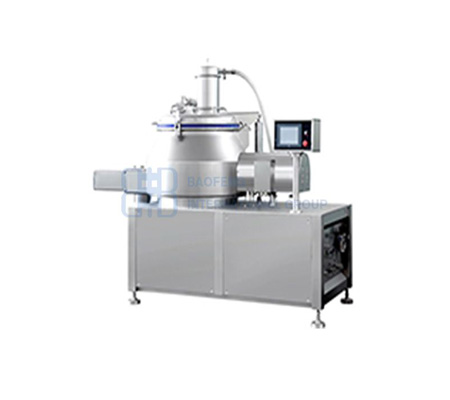This chapter classifies high shear mixers according to their configuration. As mentioned earlier, all of these types can perform different mixing processes, each with its own degree of efficiency. In addition, mixer configurations depend on the application. For example, intermittent shear mixers may not be suitable for the pharmaceutical industry due to their susceptibility to contamination; nor are ultra-high shear mixers for paint or ink production. Next, the high shear mixer supplier will share the following content with you.
This type mixes all components in a tank or vessel in batches and large quantities. Charging of the components usually takes place at the top of the vessel. The batch high shear mixer can also be configured with only one mixing head that can be lifted and suspended to serve multiple vessels. Batch mixing is said to handle faster than an in-line high shear mixer with the same power rating. One problem in this system is the cleaning process between batches with different formulations. This problem is particularly evident in viscous mixtures. Residues from the previous batch may become contaminants in the next batch. To solve this problem, a Clean-In-Place (CIP) system is used.
This type consists of mixing components in a chamber with an inlet and outlet. Since the high shear mixer generates centrifugal force, it acts as a pump to drive the mixture through the chamber. In contrast to the batch type, the chamber is always closed and therefore less susceptible to contamination. In addition, because the in-line mixer is part of the product stream, it is easier to control than the batch mixer. The product flow from the mixer can be continuously monitored, thus allowing the process operator to modify parameters in real-time.

High Shear Mixer
This type of high shear mixer uses a vacuum system to draw the powder components directly into the mixing head. The rotor-stator assembly creates a vacuum that draws the powder from the hopper. This solves several problems that arise when working with difficult-to-process powders.
When loaded into the mixing chamber, some powders can clump quickly upon contact with the liquid. Clumps tend to form on the surface of the liquid, and then higher mixing speeds are required to create a vortex. The vortex is needed to draw the powder into the mixing head. To alleviate this, these powdered ingredients need to be added carefully and slowly to prevent clumping at the surface.
The process involves converting fine powders into strong, dense agglomerates called granules. This is accomplished by mixing the powdered components and the bonding fluid with the aid of agitation provided by the impeller. The process is called wet granulation. High shear mixers also provide a means of breaking down powders into finer particles than ordinary mixers.
Wet granulation can be divided into three processes: wetting, growth, and breaking. Wetting occurs when the powder encounters a binder liquid. This results in the formation of large clumps or clusters of powder called nuclei. These nuclei then collide with each other, leading to consolidation and growth. When this happens, the larger agglomerates become denser. The resulting particles are uneven in size and are then broken up by the mixer. Shear and impact forces break the particles down to their final particle size.
These types are designed to operate at very high speeds and are intended to produce very fine particle size distributions. This results in faster homogenization of dispersed solids and liquids into a continuous phase. The special profile of the rotor produces high pumping capacity and shear strength. Vortexes are generated both above and below the mixing head. These vortices draw the mixture into the mixing head and then discharge it radially through the stator slot. In addition, the vortices are able to attract agglomerates that float on the surface. If you want to know about the wholesale best high shear mixer price, welcome to contact us.
Copyright © ZHUCHENG BAOZHIFENG MACHINERY CO., LTD. All Rights Reserved |
Sitemap
|
Powered by 